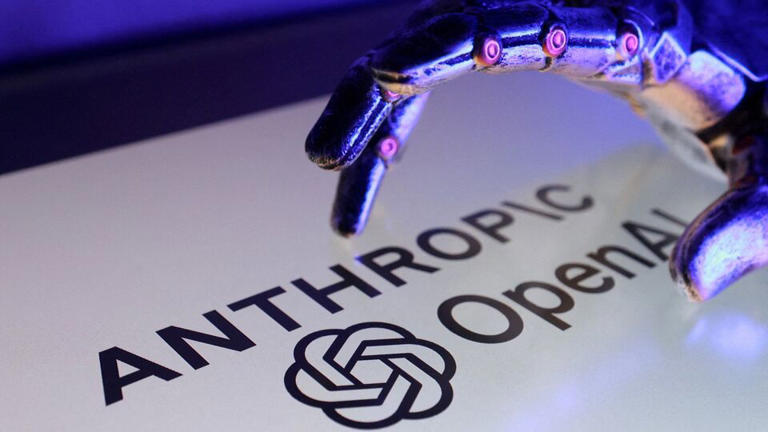Stories you may like
OpenAI Ramps Up Robotics Work in Race Toward AGI
OpenAI appears to be ramping up its efforts in robotics, hiring researchers who work on humanoid systems as it explores new ways to advance artificial intelligence.
The company has recently recruited a number of researchers with expertise in developing AI algorithms for controlling humanoid and other types of robots. Job listings show that the company is putting together a team capable of creating systems that can be trained through teleoperation and simulation.
Sources with knowledge of the company’s efforts also say OpenAI is recruiting people to work specifically on humanoid robots, or robots with a partial or full human form. One source who works in cutting-edge robotics says the company has begun training AI algorithms that are better able to make sense of the physical world and that could empower robots to navigate and perform tasks.
A number of recent hires suggest that OpenAI’s robot efforts are now accelerating. For instance, Chengshu Li joined OpenAI in June 2025 from Stanford University, where he worked on a number of robotics projects, including the development of a benchmark designed to measure the abilities of humanoid robots capable of performing a wide range of household chores. Li’s dissertation concerns the development of benchmarks and focuses on robots with a partly humanoid form, which has two arms but wheels instead of legs.
Two other researchers from another robotics lab have already joined the company according to their LinkedIn profiles. One professor at a third robotics lab that does humanoid work says one of their students was also recently recruited.
OpenAI declined to comment on its recruitment efforts or robot research plans. However, OpenAI has recently posted a number of revealing job listings related to robotics research on its site. One opening requires expertise in teleoperation and simulation. Teleoperation is a crucial part of training partial or fully humanoid robots: A human operator performs chores and controls the limbs of the robot, while an algorithm learns how to mimic their actions. The role also calls for expertise in simulation tools including Nvidia Isaac, which is widely used to train humanoids by having an algorithm learning inside a virtual physical environment.
It remains unclear whether OpenAI intends to build its own robots, use off-the-shelf hardware, or partner with a robotics company. However, another job posted in the past few weeks called for a mechanical engineer with expertise in prototyping and building robot systems with sensors for touch and motion. One roboticist says this could mean that OpenAI plans to build its own robot or that it is developing teleoperation systems for robot training. The job also calls for “experience designing mechanical systems intended for high volume (1M+), problem-solving on assembly lines,” which suggests systems that would be mass-produced or that might even be deployed in manufacturing.
All of OpenAI’s robot job openings say that the company’s robotics team “is focused on unlocking general-purpose robotics and pushing towards AGI-level intelligence in dynamic, real-world settings.”
A renewed focus on robots would suggest that OpenAI believes reaching artificial general intelligence (AGI)—AI that exceeds human intelligence—may require developing algorithms that are capable of interacting with the physical world.
OpenAI did notable robotics research in its early years, including developing an algorithm capable of solving a Rubik's cube using a humanlike hand in 2019. The company shuttered its robotics effort in 2021, however, to focus on algorithms including the large language models that have driven recent breakthroughs such as ChatGPT. OpenAI restarted work on robots last year, and The Information reported in December 2024 that the company was considering developing its own humanoid robots.
Stefanie Tellex, a roboticist at Brown University, says that building more effective robots will involve designing and training AI models capable of “processing high-frame-rate, high-dimensional perceptual input, and producing high-frame-rate, high-dimensional physical outputs”—meaning models that can see and act with high fidelity. Tellex is not familiar with OpenAI’s plans specifically, however.
Despite already having industry-leading models for conversation, reasoning, coding, and image and video generation, OpenAI will be racing a series of strong competitors as it seeks to develop the algorithms for more capable humanoid robots. A handful of humanoid startups, including Figure, Agility, and Apptronik, have emerged over the past few years, and some major AI companies, including Tesla and Google, are also investing in developing and testing humanoids. “I don’t see them having any magical advantage over anyone else,” says Tellex.
Humanoids are becoming increasingly popular as the hardware and software needed to build functioning prototypes becomes more common. While humanoids are still expensive and difficult to develop, new kinds of motors and other components have made it cheaper and easier to put together functioning systems. Software such as Nvidia’s Isaac robot development platform have also made it simpler to write the code needed to control and train humanoid systems.
Humanoid hype is also building. Venture capitalists have invested more than $5 billion in humanoid startups since the start of 2024. Morgan Stanley reckons that the humanoid industry could be worth $5 trillion by 2050.
While humanoids can perform impressive feats like dancing, they still lack the intelligence required to operate in complex and unpredictable, or “unstructured,” environments. To acquire this, they will need algorithms that go beyond a large language model’s understanding of the physical world. These systems must be able to control limbs and grippers in order to walk and manipulate physical items. Some research groups are starting to demonstrate progress in developing more generally capable AI models for robots.
At the same time, it is becoming increasingly clear that new ideas may be needed to push AI forward. The recent disappointment of OpenAI’s GPT-5 is part of a broader realization that reaching humanlike intelligence will require new avenues of research.





User's Comments
No comments there.